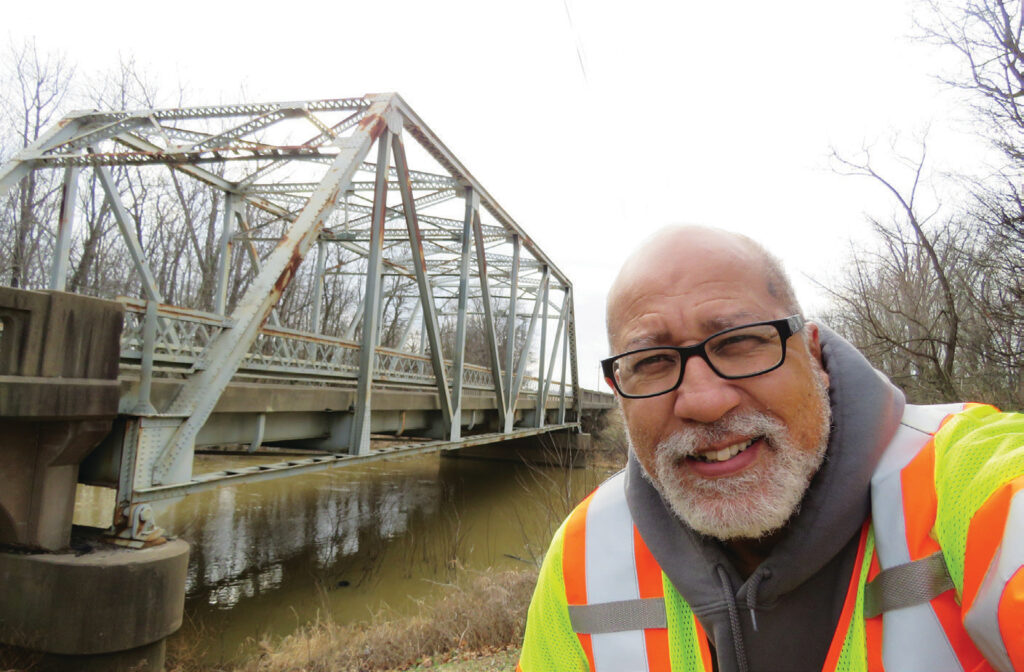You might have seen him out there — tromping through the woods in his reflective vest, armed with nothing more than a camera. Then again, you probably haven’t seen him because the places Calvin Sneed wanders are mostly vacant, and the things he photographs are often abandoned.
We know about Civil War buffs who re-enact and attend Civil War antique shows. In Great Britain, there are so many railroad enthusiasts that they are called by a name, which is trainspotters. There are TV shows, online forums and books devoted to trainspotting.
Calvin Sneed is a bridge buff. He collects information about bridges all over the United States, especially in the Southeast, and has taken photos of about 1,200 of them. He’s written three coffee-table books on the subject, the latest of which is “Building Bridges: The Iron and Concrete Wings of America.” He writes a monthly column about bridges for the Johnson City Press and Kingsport Times-News. He maintains and updates a website (ilovebridgesandtunnels.com). And he speaks to historical societies and civic clubs about how important bridges are to our history.
Two months ago, Sneed spoke to about 40 teachers at an online teacher training event for Tennessee History for Kids. His topic was toll bridges — when they were built, how they were financed, what they looked like, how much they changed our lives and what happened to them.
“Usually, at first, people don’t think that bridges are a subject they want to hear about,” he says. “But then that person will start talking about one bridge that is ingrained in their memory, from their childhood or something, and how much it meant to them. So it turns out that it does.”
What’s odd about Sneed is that he isn’t a civil engineer and never was. He’s a semiretired news anchor for WTVC, the ABC television affiliate in Chattanooga.
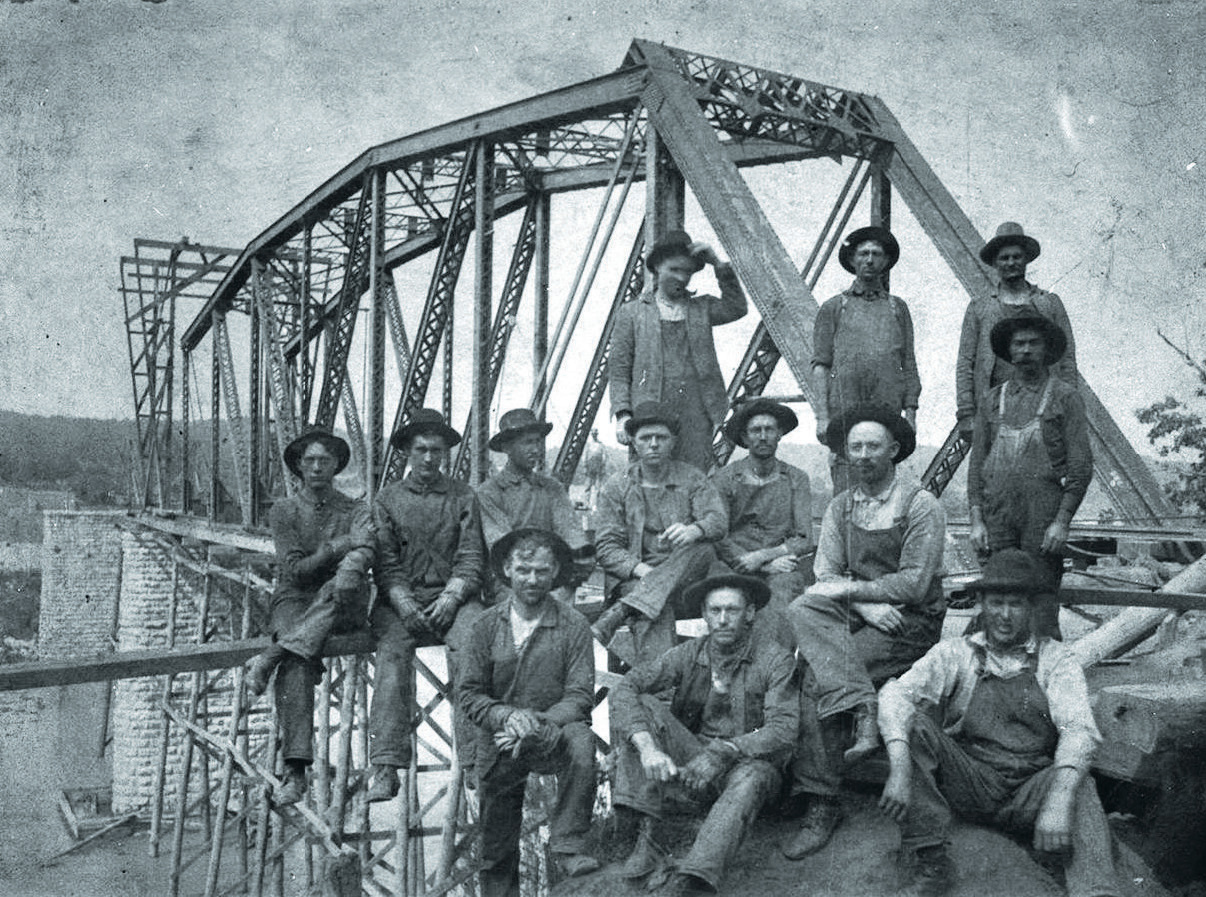
“There is no way I could have been an engineer because I wasn’t good enough at math,” he says. “I got into TV because I didn’t know how to count.”
Sneed says his passion for bridges started when he was a child visiting his grandmother in Marshall County. “My grandmother’s farm was on one side of the Duck River, and my uncle’s farm was on the other side of that river,” he says. “There was a steel truss bridge that crossed that river that I remember crossing over and over.
“I was 10 years old, in the back of a pickup truck, with the shadows of the steel beams passing over me and the river passing under me. I fell in love with that experience.”
That particular bridge was torn down in the 1960s. By that time, Sneed had already begun taking pictures of bridges, using the Kodak S-10 camera that his grandfather bought him. Young Calvin was especially fascinated with steel truss bridges, which are bridges that use steel beams that are connected into triangular units above and below the road path. “There is something about steel truss bridges,” he says. “I’m fascinated by the fact that you are surrounded by all that steel and by the fact that your weight is distributed across the whole frame.”
Because of his love of steel truss bridges, Sneed is a big fan of the Walnut Street Bridge across the Tennessee River in Chattanooga, the Shelby Street Bridge across the Cumberland River in Nashville and the Edward Talley Bridge across the Clinch River in Hancock County. All three of these are now in the “preserved” category, and Sneed says their salvation shows that the preservation push paid off. “The saving of these old steel truss bridges plays a big part in why people love downtown Chattanooga and Nashville,” he says.
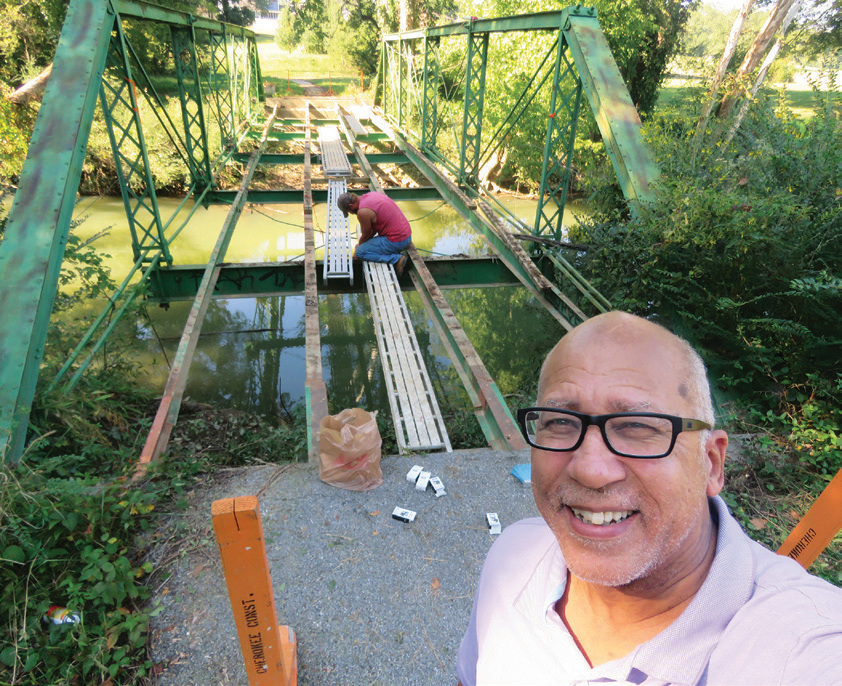
Other steel truss bridges that Sneed raves about are the South Chickamauga Creek Bridge in Chattanooga and the Dobbs Ford Bridge across Candies Creek in Bradley County. In fact, Sneed’s research was instrumental in the Dobbs Ford Bridge being preserved, which is why he received an award from the Daughters of the American Revolution for that project.
However, Sneed is not just a “steel truss bridge” sort of guy. Near the top of his list of favorite bridges is the three-arch Hammond Bridge across the Holston River in Sullivan County.
“The Hammond Bridge is a local legend in Kingsport where I’m from,” he says. “The lanes are quite narrow for a two-lane bridge, and it’s quite high over the South Holston River flood plain beneath it.”
And don’t get him started on the concrete stone arch bridge across Byrd’s Creek at Cumberland Mountain State Park. “It’s the largest masonry structure ever built by the Civilian Conservation Corps,” he says. “It is also a work of art.”
Sneed hopes that his photos, columns, books, talks and Facebook posts will help people appreciate bridges as an important part of our legacy. He has become more passionate about this over the years because old bridges are being torn down and replaced by structures that he says “are not elegant, have no character and have no class.
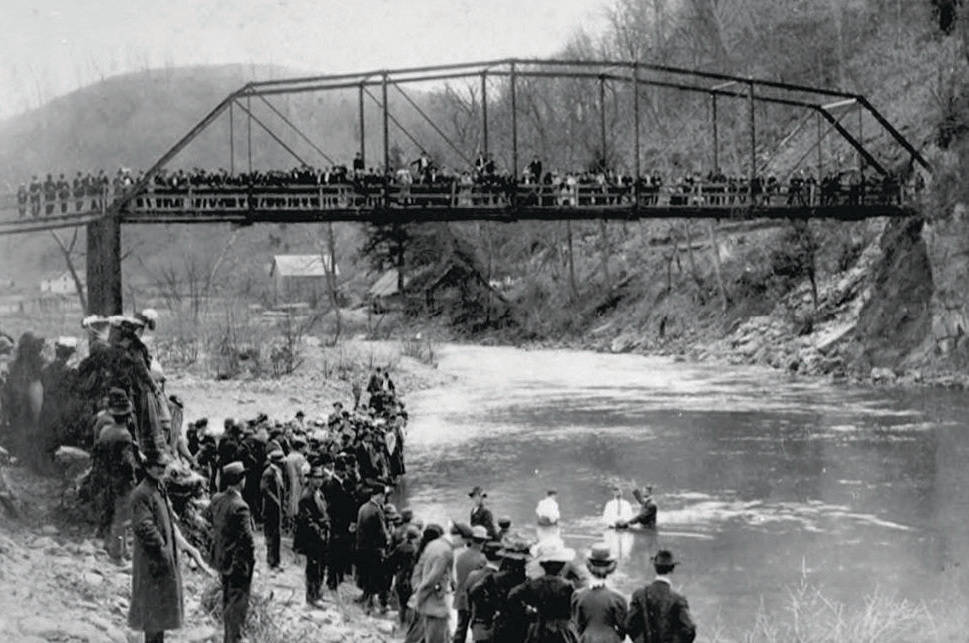
“Most of the bridges being built today are monuments to mediocrity. Their only purpose in life is to get you across a body of water — preferably in a way that you won’t even notice the body of water. These new bridges aren’t supposed to impress you or make a statement about a place.”
Sneed also says that bridges are an important but overlooked part of the landscape of cities such as Nashville and Memphis. “If you look at any picture of the downtown of a city, they are all going to have a steel truss bridge somewhere in that picture,” he says. “These are a part of every city’s DNA, and when you take that bridge down, you eliminate some of its history and take away some of its dignity.”
In recent years, Sneed has seen a lot of bridges torn down. He is still mourning over the razing of the Veterans Memorial Bridge across the Tennessee River on U.S. Highway 41 in Marion County. “There was a beautiful steel truss bridge there that was built in 1929, but in 2015, the Department of Transportation replaced it with a modern bridge that has no notable features at all. Bridge enthusiasts all over the South were mourning over that one.”
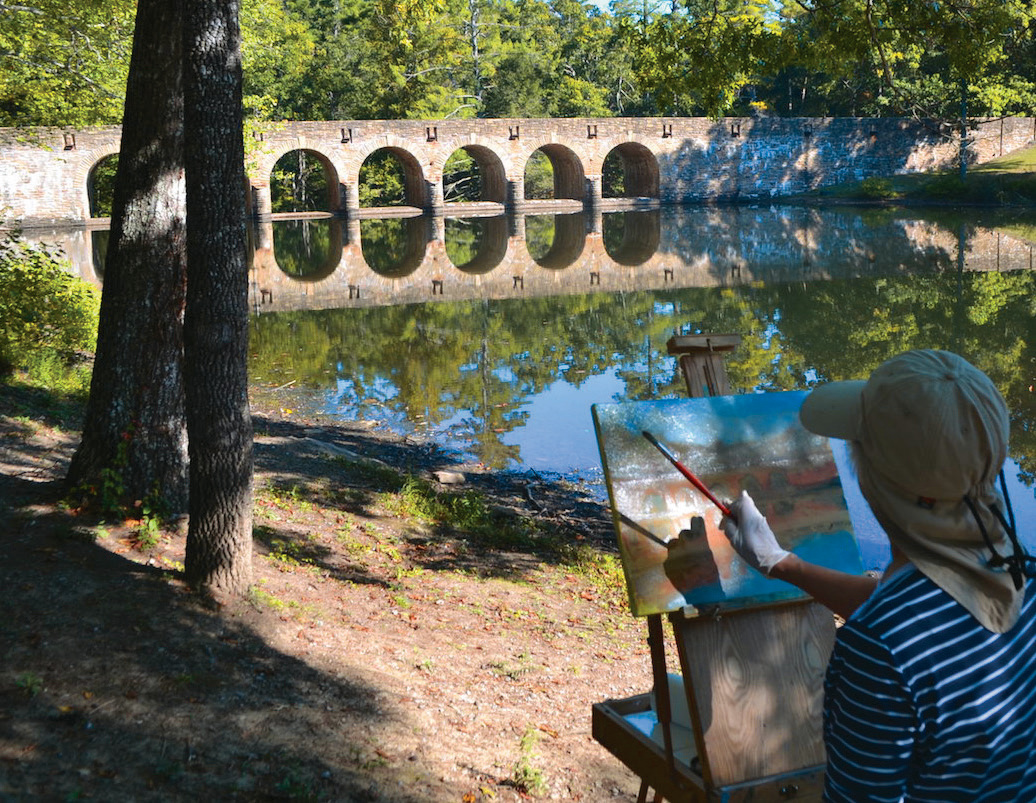
“The truth of the matter is that for every one bridge that is saved, about eight are torn down,” he says. “There were 18 toll bridges built in Tennessee in the late 1920s, and of those 18, only two survive.”
However, Sneed points out that there are a few old bridges yet to save. Among the bridges he lists in the “endangered” category are the South Hook Five-Arch Bridge across Bigby Creek in Maury County, Kingsport’s Hammond Bridge, the South Chickamauga Creek Bridge in Chattanooga, the O&W Bridge over the Big South Fork River in Scott County and the Old Stone Fort Bridge across the Duck River in Coffee County.
“Someone at TDOT once told me that it was the state’s mission to replace every steel truss bridge in Tennessee, and they ended up just about doing it,” he says.
“But if I have to go to every bridge on the planet for people to understand how important they are, I will,” says Sneed. “My car has 578,000 miles on it and isn’t giving out anytime soon.”
Feb. 7 is the 77th anniversary of an important event in Tennessee transportation history.
In the late 1920s, the Volunteer State began a major upgrade to its road system that included the construction of dozens of bridges. These bridges were originally financed by tolls, which were the fees paid by people to cross them. In most places, these bridges were located near or adjacent to longstanding ferry crossings.
The toll varied based on whether a person was walking, driving a car, driving a truck, carrying passengers or moving livestock. In 1927, it cost a person driving a car 25 cents (plus 5 cents per passenger) to cross most toll bridges in Tennessee.
Twenty-five cents in 1927, adjusted for inflation, is $4.41 today. So you can see why, in the 1930s and 1940s, it was expensive to attend school or go to church on the other side of a toll bridge from your house. “People hated the tolls,” says Robbie Jones of Richard Grubb & Associates, who did a detailed report about toll bridges in 2014 for the Department of Transportation. “They despised them because it was money out of their pockets, and they hated them because it was inconvenient. I mean, sometimes you had to wait in line behind a lot of other cars just to pay the toll.”
According to Jones’ report, Tennessee had about 20 toll bridges by 1929. By the end of World War II, tolls still existed on only eight of them. All eight were major river crossings — including bridges across the Tennessee River at Loudon (Loudon County), Haletown (Marion County), Perryville (Decatur and Perry counties), Savannah (Hardin County) and New Johnsonville (Benton and Humphreys counties).
Eventually the state shifted to a program under which roads and bridges were built and maintained by gas taxes. After soldiers and sailors returned home from World War II and started buying cars, gas tax revenues soared, and the toll revenue wasn’t really needed.
On Feb. 4, 1947, the Tennessee General Assembly eliminated toll bridge collections on the state’s remaining bridges. The new law went into effect three days later — a day when every major newspaper in the state proclaimed the story at the top of the front page. “Admission to Chattanooga is now free!” the Chattanooga Daily Times announced. “Paying to cross spans is a thing of the past,” said the Memphis Commercial Appeal.
Drivers were universally happy, although the deletion of tolls did result in the turning of a page of Tennessee history. You see, since toll bridges were often more expensive than ferries, some ferries still existed right beside toll bridges. One of them was the Niles Ferry near Vonore, which shut down immediately on Feb. 7, 1947. “It (the ferry) was here when I was a little girl,” said 80-year-old Loudon resident Augusta Long. “I’m gonna miss the old boat.”



